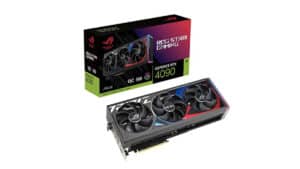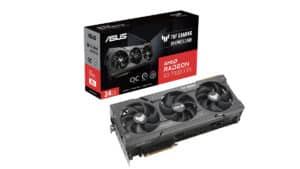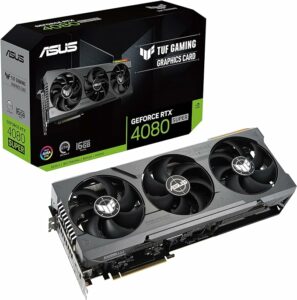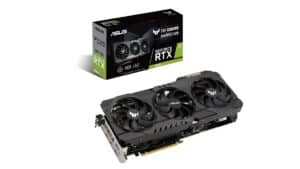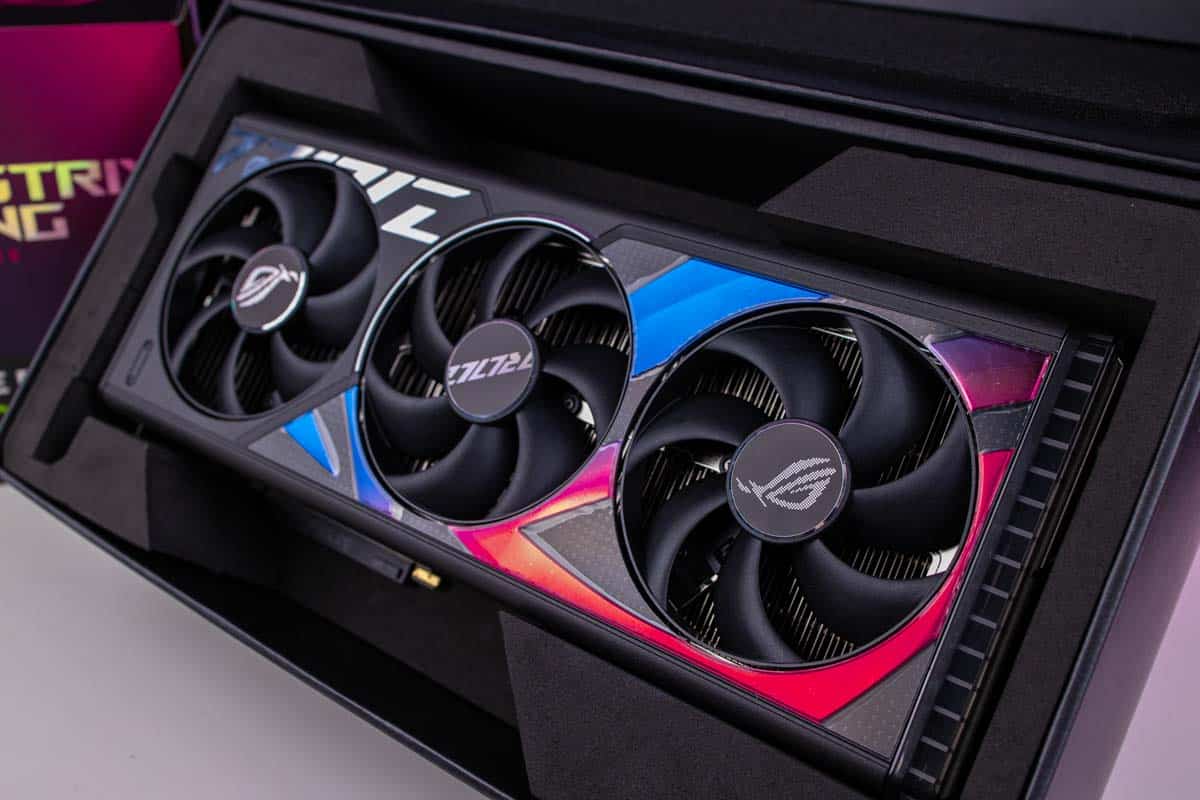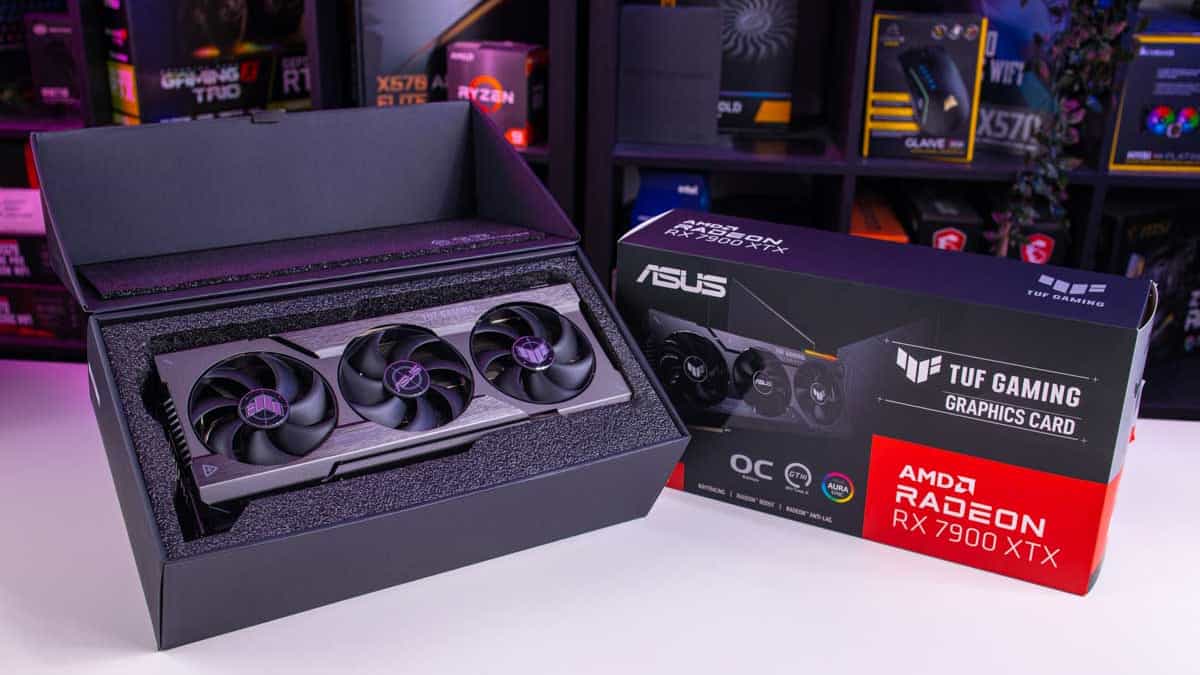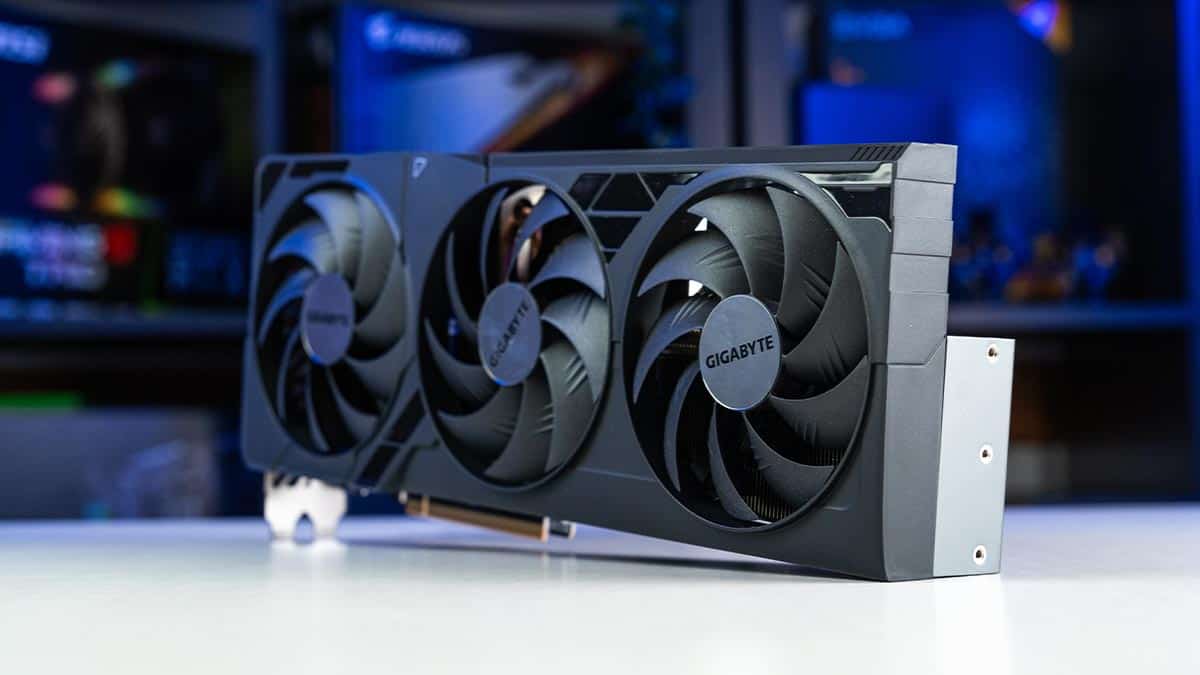Best GPU for game development – our top picks
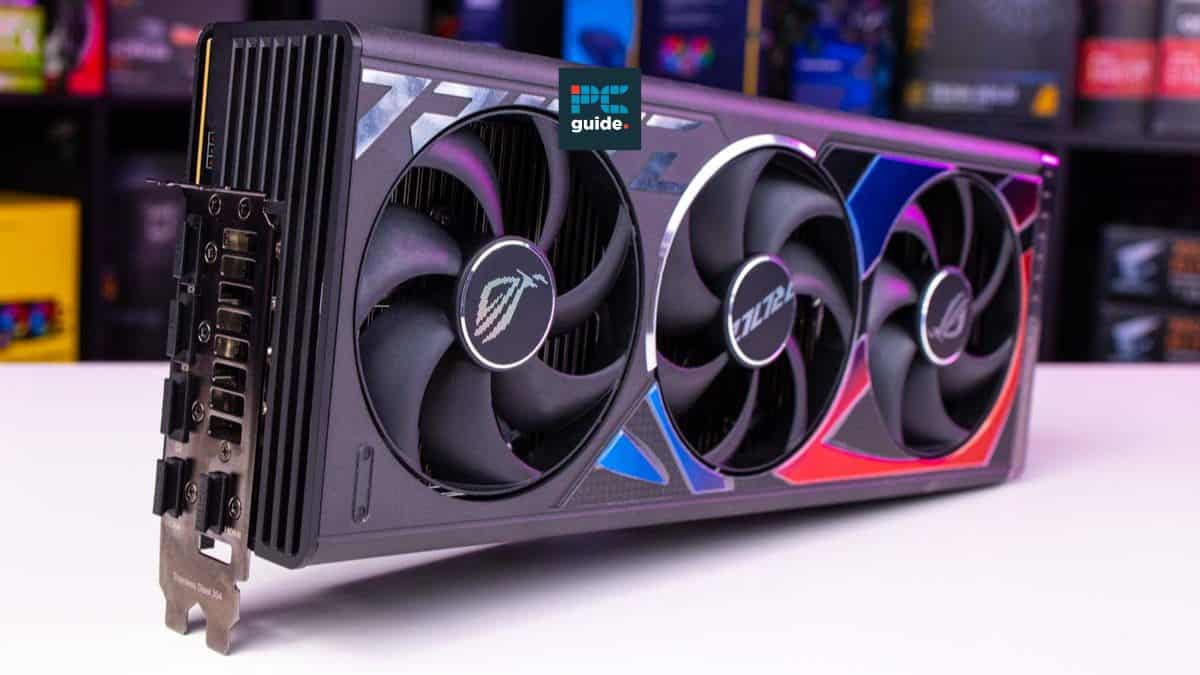
Game development is a complex and challenging process that requires a powerful computer system, and whether you’re a user of Unreal Engine or Blender, you’ll be in agreement that you need one of the very best GPUs. The GPU is responsible for rendering graphics, animations, and visual effects, which are crucial elements in creating immersive and visually appealing games, but that’s not all: you’re also going to need a card that’s got enough juice to power complex computational calculations and technical tasks required by the software.
In this article, we’ll take a closer look at some of the best GPUs for game development available on the current market, drawing specifically on cards we’ve reviewed to use our hands-on experience to highlight the strengths and differences of this specific lineup. Whether you’re a professional developer or a keen enthusiast, this guide should help you on your way to an upgraded developing experience.
Products at a Glance
How do we pick the best GPU for game development?
Choosing the best graphics cards for the game developers of the world is a feat that we by no means take lightly, but by drawing on our knowledge of precisely what makes a GPU good for game-developing scenarios as well as our in-house reviews, we’ve selected a lineup of four excellent cards for you to pick from. In terms of specific criteria, we looked for cards that pull their weight when it comes to both graphics and computational power: essentially, high specs across the board. For the demanding graphics rendering and coding required by game development software, you’ll benefit from a high number of CUDA Cores or Stream Processors, a sufficient supply of VRAM, and a good amount of Tensor Cores for a better workflow in high-performance computing tasks. Of course, these demands need to be balanced by a good cooling solution. Without these features in abundance, your 3D modeling and rendering will be slower, and you’ll be at risk of overheating as well as lag.
On top of fine-tuning our search to weigh in on those individual aspects, we’ve made sure to pick a selection of cards that we have reviewed firsthand. We’ve put each card to the test when it comes to its key specs, synthetic benchmark performance, and pricing, to make sure you’re getting a reliable and future-proofed GPU you can rely on for game development in programs such as Unreal Engine 5, Unity, and the like – and overall gaming too, as the two go hand in hand. To signpost those clearly so you can get stuck into the finer details, you can read our RTX 4090 review, RX 7900 XTX review, RTX 4080 Super review, and lastly, our RTX 3090 review, as the 30-series isn’t to be discounted just yet. Now that we’ve given you a peek into the cards in this guide, let’s dig into what makes each individual one good for game development in particular.
Product Reviews
- Fastest GPU currently available, and the gold standard of graphics cards in 2024
- Leading bandwidth and huge memory pool of 24GB VRAM ensures it runs fast in challenging software
- 3rd-gen DLSS and ray tracing will no doubt add to your game development experience
- Extreme performance comes with extreme pricing - this is one expensive card
- Very power hungry, and will require a a full 1000W minimum PSU
- A hefty and heavy card that weighs 8.05 pounds, so you'll need ample space in your PC case
The GPU that’s scored the top spot on our list won’t come as too much of a surprise, as its performance on the market right now is pretty much unparalleled: it’s the ASUS ROG Strix RTX 4090 OC edition. There’s a long list of what makes this card good for game development, but in general, its specs speak for themselves. We awarded this GPU a 4.5/5 in our review, and it’s clear why. The ASUS ROG Strix RTX 4090 OC is a top-tier variant of the RTX 4090, featuring a boost core clock speed of 2,640 MHz and a high TDP of 450W, which means it is equally as powerful as it is challenging to keep cool. Being the market leader, the 4090 is the only Ada Lovelace architecture graphics card to be forged on the AD102 silicon, the largest die. Completing the specs are a total of 16,384 CUDA cores with 512 TMUs, 176 ROPS, and a massive 24GB GDDR6X VRAM with a 384-bit memory bus.
What makes the RTX 4090 so impressive on a technical level is its 1,008 GB/sec bandwidth, just over 1TB/sec, which no other consumer-level graphics card could even hope of mirroring. This translates to 21 Gbps effective memory clocked at 1,313 MHz, and means that the 4090 can fit more data into the main memory at even faster speeds than other GPUs. Essentially, it’s super quick at processing as well as rendering, so it will have no problem coding in Unreal or Blender.
One of the other standout features of the RTX 4090 is its advanced ray-tracing capabilities. This will allow for realistic lighting and shadows in games and other applications. Ray tracing is a computationally intensive process, but the RTX 4090’s impressive hardware specs, including its 16,000 CUDA cores and massive 24GB of memory, enable it to handle ray tracing with ease. Additionally, the RTX 4090 also supports DLSS 3.0 technology, which uses AI to upscale lower-resolution images to higher resolutions while maintaining image quality and improving performance.
There are two downsides when it comes to this card: first and foremost, it’s huge, measuring 14.1 x 5.9 x 0.1 inches and weighing 8.05 pounds, so you’ll want to triple-check that you’ve got enough space for it inside your case before you buy. Buying this card is no small feat either, as it comes with the flagship pricing you would expect from Nvidia. The 4090 itself has an MSRP of $1,599, but the ASUS ROG Strix RTX 4090 OC comes in at $1,999.99, which is a big markup of 25%. Whether its capabilities are worth its price point is up to you to decide, but for those who require top-of-the-line performance, the RTX 4090 can be an ideal choice.
Overall, the RTX 4090 is an excellent choice for game developers, machine learning professionals, and enthusiasts who require the most powerful graphics card available. Its advanced ray tracing and DLSS technologies, coupled with its high-performance hardware specs, make it a top contender in the GPU market, offering smooth and seamless performance that sets the standard for the industry.
- The current top-tier graphics card available from AMD
- Its impressive 4K performance is bolstered by FSR 3
- Has a more than sufficient 24GB memory capacity
- Weak ray tracing and frame generation compared to the competition
- Not the cheapest way to get the RDNA 3 architecture
- Memory is GDDR6 rather than the faster GDDR6X
The ASUS TUF Radeon RX 7900 XTX OC is another great choice for game development. It has impressive performance specs that can handle demanding applications with ease. With a base clock speed of 1,895 MHz and a boost clock speed of 2,565 MHz, this GPU provides a high level of processing power for game developers to work with. And in demanding environments too – you’ve got 6,144 stream processors and 24GB of GDDR6 memory to thank for that. It might not be a complete rival to the 4090 in terms of raw power, but AMD took the stance of making a slightly smaller flagship card that’s got a far more aggressive pricing strategy, and it might have paid off in its favor because this thing impresses.
The performance of the 7900 XT for game development was demonstrated in our synthetic 3DMark benchmarks, in which it got an overall score of 20,319 in Fire Strike Ultra (4K) and 14,010 in Time Spy Extreme (4K). However, one of the other standout features alongside its 4K capabilities with native rendering is its reasonable TBP of 355W. It strikes a balance between performance and energy efficiency, which means that the GPU can deliver powerful processing capabilities while still operating efficiently and without overheating. For stable power deliver, you’ll only need to make sure you’ve got an 850W power supply, far more reasonable than the 1000W needed by the 4090.
Additionally, the GPU’s dimensions of 352.9 x 158.2 x 72.6 mm make it compatible with most PC cases, and physically speaking, ASUS TUF’s simple yet militaristic and durable design doesn’t disappoint on the eye. It’s worth noting though, this specific model is quite a bit larger than the reference model, so you might want to double-check your measurements; or make sure that you’ve got one of the best PC cases available.
Overall, the ASUS TUF Radeon RX 7900 XTX OC is a strong contender in the GPU market due to its impressive processing power, ample memory, and reasonable power requirements. Game developers looking for a high-performance GPU that can handle demanding applications should definitely consider the ASUS TUF Radeon RX 7900 XTX OC, as you could save yourself $500 by going for this over the RTX 4090.
- Brings down the price of the AD103 die, and packs all the Ada Lovelace enhancements
- ASUS TUF branding ensures durablity and a quality build
- Improved performance over the original 4080
- High price of $999 without the halo performance of the 4090
- Needs DLSS 3 activated to truly shine in gaming performance
- Not as readily available as some of the other high end 40-series cards
The ASUS TUF Gaming GeForce RTX 4080 Super isn’t the first high-end 40-series GPU to make this list, but the Super series refresh of the 4080 has improved its performance and lowered its cost, bringing you an Ada card with all the bells and whistles for a more affordable price. Internally, not too much has changed from its predecessor, as it’s still built on the AD103 GPU with 16GB GDDR6X VRAM on a 256-bit memory bus. However, you’re getting a slight bump up in CUDA cores to 10,240 from 9,728 (a 5% upgrade), and 320 texture mapping units (TMUs) from the first run’s 304. Realistically, this translates to real-world performance gains of about 2-5%. Its boost clock speed of 2550 MHz is one of the fastest clock speeds available, making it a strong contender for game development, along with other demanding applications, and our synthetic benchmarks were a testament to this.
Through the GPU rendering benchmark launcher in Blender 4.0, the RTX 4080 Super scored highly with 4,413 points in Monster, 2,097.5 points in Junkshop, and 2,149.5 points in Classroom. This is mostly down to the card’s 7680 CUDA cores and 12GB of GDDR6X VRAM, which is plenty of processing power and memory for most game development applications, including Blender 4.0 alongside others. However, it’s important to note that the RTX 4080 Super does require a high-wattage power supply of at least 850W and a TDP rating of 320W. This means that it will draw a lot of power and generate a lot of heat, so it’s crucial to have a reliable cooling solution in place.
In terms of connectivity, the RTX 4080 features a 1 x 12-pin power connector, 1 x HDMI 2.1, and 3 x DisplayPort 1.4a, providing users with a variety of options to connect to different displays and setups. This can be particularly useful for game developers who need to work with multiple displays to test and refine their games. Finally, the most crucial thing playing in the 4080 Super’s favor is its pricing: the price of the Super undercuts that of its original RTX 4080 model, retailing for $999 instead of $1,299. Now, this by no means gets it on the list of the best budget graphics cards, but you’re getting a GPU that’s priced aggressively considering its impressive specs and performance, and the fact that it’s one of the Nvidia cards you can get that’s closer in performance to the 4090.
Overall, the ASUS TUF Gaming GeForce RTX 4080 Super is an excellent choice for game developers and power users who require a high-performance GPU. Its fast clock speed, ample processing power and memory, and multiple connectivity options make it a top contender in the GPU market, and especially in the more niche market of game developers looking for a new card to give their creation process a boost.
- Boasts an undeniably impressive 24GB of VRAM
- It uses Tensor Cores, meaning it's still got a load of computational power
- Outperformed by RTX 4080 Super
- Doesn't benefit from Ada architecture or DLSS 3.0 technology
Last up, it might be a member of Nvidia’s last-gen 30-series, but the previous flagship 3090 still has plenty to offer, and that’s why the ASUS ROG Strix RTX 3090 OC has made it onto our list of best GPUs for game development. With 24GB of GDDR6X VRAM and a whopping 10,496 CUDA cores, this GPU delivers exceptional processing power and speed despite being a little on the older side, and can still handle even the most intensive game development applications. It might no longer be the leader in the gaming space, but its VRAM and large memory bus still make it a strong choice for productivity and creator-led tasks – we’ll touch on this shortly in our synthetic benchmarks.
The ROG STRIX OC is optimized for high-speed gaming, and this is a big benefit when it comes to using tools such as Blender, Unreal, or Unity. With a boost clock speed of 1,935 MHz and a memory clock speed of 19.5 Gbps, it ensures that game developers can work on their applications with smooth and seamless performance. In terms of benchmarks, Blender 4.0 was easily reaching scores of 12,449 in Fire Strike Ultra, 10,004 in Time Spy Extreme, and 13,163 in Port Royal (RT). As demonstrated in our 3090 review, it doesn’t quite close the gap to reach the 4080 Super, but it’s still commendable, and more than sufficient for most creators.
One of the standout features of the ASUS ROG Strix RTX 3090 OC is its advanced cooling system. This includes three Axial-tech fans and a heatsink with MaxContact technology, ensuring that the GPU stays cool even during extended use. This is important for game development, as it allows developers to work on their applications for extended periods without worrying about overheating or performance issues.
Overall, the ASUS ROG Strix RTX 3090 OC is an excellent choice for game developers, especially for those who are looking for a high-performance GPU that can handle even the most demanding applications. With its impressive processing power, ample memory, and advanced cooling system, this GPU is sure to deliver the performance that game developers need to create cutting-edge games and applications.
Features and considerations for choosing the best GPU for game development
When selecting a GPU for game development, there are several factors to consider. One of the most critical is the GPU’s raw power or processing capability, which is typically measured in clock speed, number of cores, and memory bandwidth. Our picks highlighted the extremes of GPU power, as the 4090 has some of the highest specs offered with its 16,384 CUDA cores and boost clock of 2,640 MHz. AMD follows suit with the 7900 XTX flagship having 6,144 stream processors and boost clock speed of 2,565 MHz. The more powerful the GPU, the faster it can render and process complex graphics and visual effects. Therefore, it is an essential consideration for game developers who work with high-end game engines and create demanding graphical content. However, to prevent bottlenecking, it’s almost equally as important to look at some of the best CPUs for game development; bottlenecking occurs when one of your GPU or CPU components is more powerful than the other, causing your system to underperform. If you’re considering the high-end GPUs we’ve listed, you’ll need to make sure the rest of the system is up to the task before you get started with installation.
Another crucial factor to consider is the GPU’s compatibility with the game engine and software tools you’ll be using. Different game engines and software tools have specific hardware requirements, so selecting a GPU that is compatible with the tools you use is critical to ensure optimal performance and productivity. Luckily, from reading the Unreal Engine 5 system requirements and recommended hardware, as well as the requirements for Blender, you can see that they don’t demand a lot from your system. For example, Unreal just requests a DirectX 11 or 12 compatible graphics card. This means you’ll really be able to tell the difference when you’re using a more than capable GPU.
Our Verdict
If you’re looking for the ultimate performance and cutting-edge features, the RTX 4090 is the top choice, with its lightning-fast clock speeds and a generous amount of VRAM setting the absolute gold standard for GPUs in any context, not just for those looking to develop games. If you’re looking for a slightly more affordable option without sacrificing performance, the ASUS TUF Radeon RX 7900 XTX OC is an excellent choice. And if you want a high-performance GPU with advanced cooling technology, the ASUS ROG Strix RTX 3090 OC is a perfect choice. On the whole, it’s a formidable lineup that serves as an excellent starting point for your game creating journey.
Ultimately, the best GPU for game development will depend on your specific needs and budget. By taking into account the factors we’ve discussed, you’ll be well-equipped to make an informed decision and choose the right GPU for your needs. What’s more, we recommend picking the strongest variants here, as older GPUs will need replacing sooner than the latest models, and won’t perform as well in the latest and greatest software.


